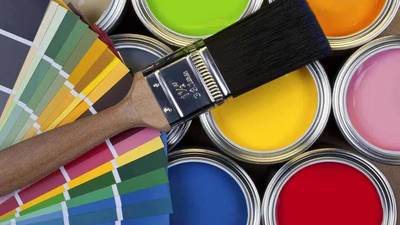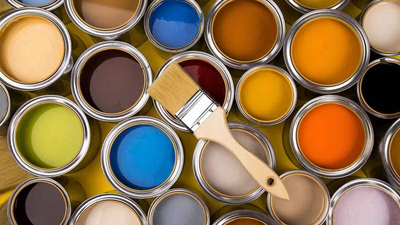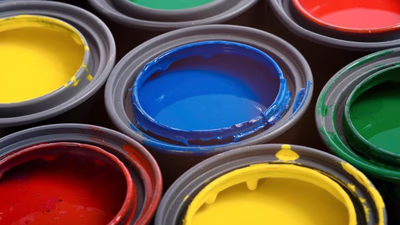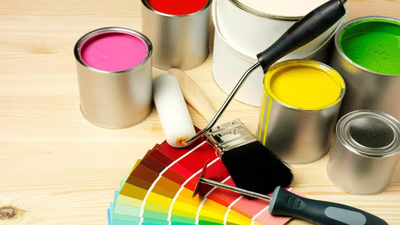
Diverse construction paint options for sustainable building solutions.
The construction paint market is growing globally. The increase in the construction process in developing countries and also after the economic boom in some developed countries is one of the main growth factors of this market. People's awareness of the negative effects of industries on the environment has increased the demand for green and environmentally friendly building paints. Paint manufacturers have also focused on producing low VOC paints without lead and inorganic mercury. The construction paint industry benefits from technological innovations. The use of advanced technologies such as self-healing paints, nano-paints, water-, heat- and chemical-resistant paints, production of high-coverage paints and permeable paints for different surfaces are among the recent developments in this industry.
Buyers are looking for a color that has high quality and stability. High-quality paints usually have resistance to scratches, decay, heat and water and do not peel over time. A color that has the ability to cover properly will be more attractive to buyers. Paints that completely cover the surface with a small number of layers are preferred. Colors that have good coloring and can create the desired color uniformly and prominently, will be more attractive to buyers. Colors that are easy to use and clean are preferred. Buyers appreciate colors that dry quickly and don't require detergents and time to clean. Types of construction colors are:
- Acrylic paints are composed of acrylic polymer and are very popular due to their properties of high projection, heat and water resistance, high durability and flexibility. Acrylic paints can be matte or glossy and are used to cover walls and ceilings.
- Latex paints consist of water-based latex polymers and are very suitable for indoor use due to the breathability of the walls, resistance to decay, moisture and decay. Latex paints are usually available in matte and non-glossy finishes.
- Oil paints are made from natural oils such as sesame oil or cotton oil. They are used to decorate wooden surfaces such as doors, windows and furniture. Oil paints are usually available in matte or semi-gloss finish.
- Alcoholic paints are based on alcohol and are used to cover surfaces such as metals, plastics and glass . Alcohol-based paints are usually supplied in gloss.
- Epoxy paints consist of a combination of resin and hardener and are used to cover surfaces that require high resistance to scratches, heat and chemicals . Epoxy paints can be matte or glossy, and in some cases, they can also be decorative.
- Acrylic paints that have many fans in the construction industry. They have high resistance to moisture and water and are usually offered in matte and glossy form.
- Carbonate paints are produced based on calcium carbonate powder and are suitable for covering walls and ceilings. They come in matte finish.
- Silicate paints are prepared based on potassium silicate powder and are used to cover walls and ceilings. They come in matte finish.
- Silicone paints are prepared based on silicone polymers and are suitable for covering concrete and cement surfaces. They come in matte or glossy finish.
Colors that do not change and remain stable after a period of use are considered. Buyers appreciate colors with high color stability to maintain the long-lasting beauty and strength of their surfaces. Having a wide range of colors in the market can make buyers more attractive. Buyers welcome the choice of various colors to create diversity and beauty in their interior and exterior decoration. These days, most buyers are looking for colors that cause the least harm to the environment. Paints with lower VOC content (organic compounds containing amines) and without lead and inorganic mercury are more attractive to buyers.
The concept of sustainability in building paints has grown significantly. Focusing on the production of recyclable paints, using natural raw materials and production with sustainable energy, in order to reduce negative effects on the environment, is of great importance. With the advancement of technology, smart and interactive colors have also entered the market. These paints can automatically change color, adjust lighting, record heat and control humidity. The use of natural and vegetable colors in construction colors is also growing. These colors have the least negative impact on the environment and human health and are usually known as biological colors or vegetable colors.
-

The West Asian region, particularly Iran and Turkey, plays a significant role in the production of construction paints. Iran is a leading producer, while Turkey hosts major companies like AkzoNobel Türkiye and Betek Boya. Saudi Arabia"s rapid construction growth has led to increased demand for building paints, contrasting with Kuwait, Qatar, and Bahrain, which rely heavily on imports due to limited domestic production. The region"s unique environmental conditions necessitate paints that resist weather changes and UV rays. The oil-rich landscape of West Asia offers potential for economic growth through local paint production, leveraging raw materials to reduce costs and enhance sustainability. Countries like Germany and India also contribute significantly to the market with high-quality exports. The architectural focus on aesthetics in West Asia drives demand for diverse color options and environmentally friendly products. As urbanization continues, the need for innovative paint technologies is expected to rise.
-

Understanding the target market is crucial for exporting construction paint. Researching local needs, competitors, and regulations helps shape an effective sales strategy. Effective advertising through branding, digital marketing, and participation in exhibitions can attract foreign customers. Direct communication with potential clients via email, phone, or video conferencing is essential for building relationships. High-quality products that meet local standards foster customer trust and long-term partnerships. Adapting to local tastes in color and style is important, as is providing reliable after-sales service. Collaborating with local representatives can facilitate market entry by leveraging their knowledge and connections. Competitive advantages such as pricing, product variety, and fast delivery can differentiate your offerings in a crowded marketplace.
Compliance with export laws and obtaining necessary certifications are vital before entering foreign markets. Understanding cultural nuances enhances business relations. Networking through trade shows and industry events builds valuable connections within the sector. Adhering to specific standards for building paints regarding technical specifications and labeling is mandatory in many regions. Awareness of regulations concerning harmful substances ensures compliance with health and safety protocols.
-

The construction paint market is experiencing significant growth, driven by increased construction activities in developing nations and a post-economic boom in developed countries. There is a rising demand for environmentally friendly paints, prompting manufacturers to produce low VOC options free from harmful substances. Technological advancements have led to innovations such as self-healing and nano-paints, enhancing product performance. Buyers prioritize high-quality paints that offer durability, resistance to environmental factors, and ease of application. Various types of paints are available, including acrylic, latex, oil-based, alcoholic, epoxy, carbonate, silicate, and silicone paints. Each type has unique properties suited for different applications. The trend towards sustainability is evident as consumers seek paints with lower environmental impact and higher color stability. The market also sees a growing interest in smart paints that can adapt to environmental changes. Overall, the diversity of colors and formulations available caters to the evolving preferences of buyers in the construction industry.
-

The global demand for construction paints has surged due to a construction boom, leading to significant advancements in production and technology among leading countries. Nations like China, the United States, Germany, India, South Korea, and Italy dominate the market by adhering to high-quality standards and international certifications. These manufacturers utilize advanced technologies such as nanotechnology and smart features in their products, enhancing durability and functionality. Innovations include self-healing properties and energy-efficient designs that cater to modern architectural needs. The competitive landscape is bolstered by effective marketing strategies, collaborations with architects, and supportive government policies. Additionally, these countries prioritize environmental standards by minimizing harmful substances in their production processes. Their strong infrastructure and skilled labor force further enable efficient production of a diverse range of high-quality paints that meet global market demands.




